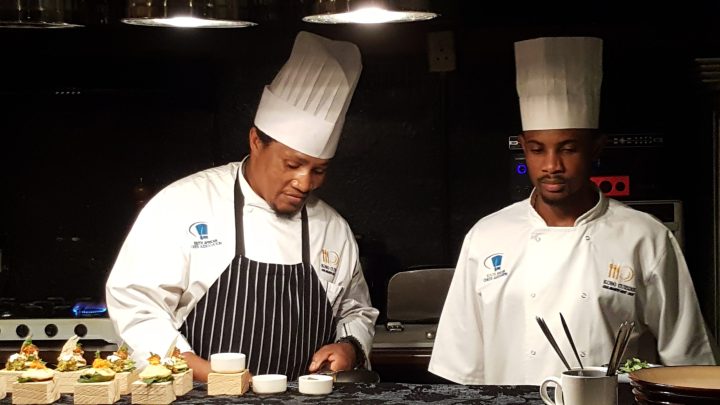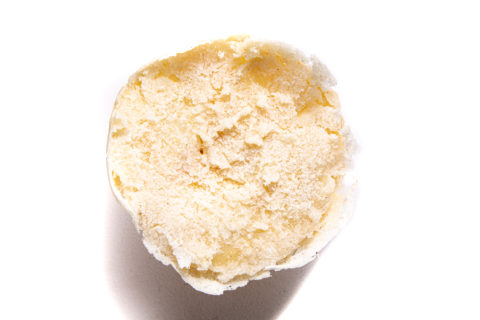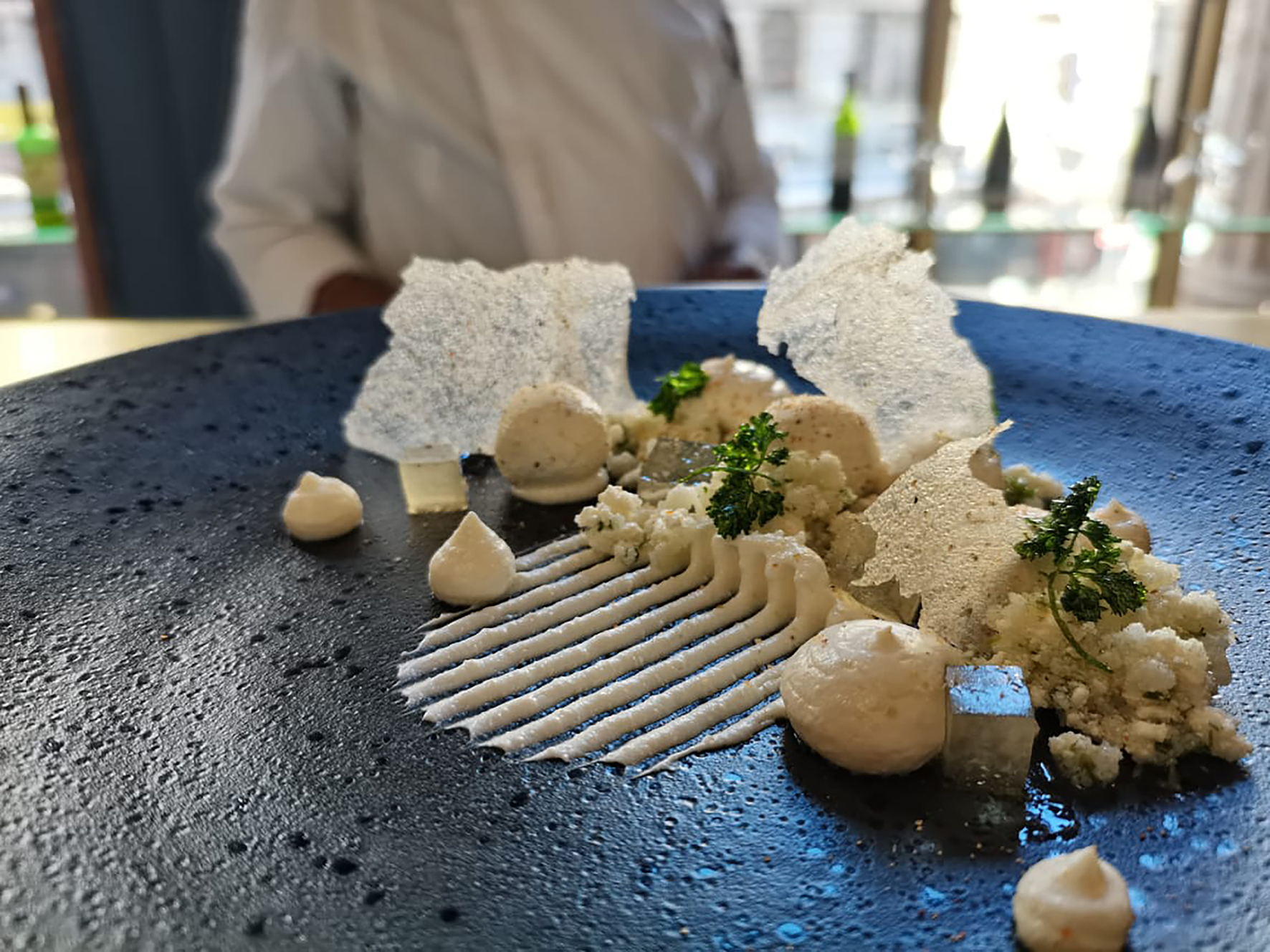SCOFF
The Recipe for Resilience

South Africans value stubborn, reliable resilience in people and pap.
The author supports The Saartjie Baartman Centre for Women and Children in Manenberg, Cape Town. Please support them here Saartjie Baartman Centre.
Foodie terms of endearment are often extremely odd. The French refer to their nearest and dearest as “Mon petit chou” (my little cabbage) while the Japanese address the objects of their affection as “tamago gata no kao” (egg with eyes). In South Africa, to be told “Sho, uyiskhokho!” is high praise indeed even though the phrase primarily pertains to the hard crust of dried phuthu/pap at the bottom of a pot.
In order to understand why this metaphor is meant as a compliment it is necessary to savour the saying within its kasi context. In Tsotsitaal, equating an individual with this crust (variously known as isikhokho, sekhokho, sikhokho, xikhokho or tshikhokho depending on regional creole variations) infers positive traits of a tough, resilient, reliable and stubborn person. Anyone who has ever tried to prise off this starchy residue will know that considerable strength and patience are required to do so. Anyone who has ever eaten such scrapings will know that perseverance pays off because isikhokho is a crisp, delicious delicacy.
As Chef Hope Malau (author of Johanne 14 cookbook) puts it: “What we are talking about is that Die Hard/last man standing kind of guy. The crust at the bottom is tough to get off the base and a bit burnt but you can count on it. In good times it is there to mop up the leftover sauces from the pots while washing the dishes in the morning. In bad, hungry times it is a scrap to eat when nothing else is on offer. Whatever the circumstances it comes through for you.” Chef Xoliswa Ndoyiya (author of Ukutya Kwasekhaya: Tastes from Nelson Mandela’s Kitchen) adds: “Essentially, it means that unbeatable, unconventional, surprisingly appealing main man or queen.”

Isikhokho crust. (Photo: Ashleigh Frans for @100_flavours_sa)
Finding a delicious surprise at the bottom of a pot is the exact opposite of the nearest English idiom – “scraping the bottom of the barrel” – which implies settling for the worst option out of necessity. Placing the two phrases together allows us to explore ideas around who gets to decide what the “best” bit of any dish is and how those judgements are made.
Chef Siya Kobo’s eponymous new fine dining 20-seater restaurant (which will launch on 29 May) is all about challenging diners to reexamine what constitutes the “best” bits. He says: “I have always tried to make diners think. For a long time now, my work has been aimed at highlighting all these amazing, evocative, uniquely South African tastes and textures. I like to reimagine food that exists in our everyday lives as part of a fine dining menu. I want us to really see those local ingredients, flavours or cooking methods that get overlooked or even scorned. I want us to be proud of those tastes that we love in private but don’t think are proper to eat in a restaurant setting.”
He continues: “I want each taste that I serve to take people who eat with me on a journey of memory and emotion. Caviar and pancetta are delicious and obviously there is a place for them but those international ingredients don’t evoke memory in most South Africans. Remembering where we come from – especially remembering difficult times lived through and survived. Seeing those times transformed into a beautiful fine dining experience that brings confidence, strength and joy. Which is what art should do. It should push us, inspire us, remind us who we are and how much we are capable of achieving.”
It is a truth universally acknowledged that Covid-19 hit the hospitality industry hard. The chef’s previous restaurant, Kobo Cuisine, at the Maboneng Precinct, Johannesburg was forced to close in May 2020 and the past year has been extremely difficult for South Africa’s foremost advocate of the New African Cuisine genre but he says: “I have learnt to always look forward to better days and push on regardless of the challenges. Being resilient and tough has always been within me but now that stubborn streak is essential. Giving up is not an option. Lockdown destroyed so much but the only way forward is forward. I am still here and still cooking. KOBO is a new start and a declaration of faith in the future.”
Both the menu and the venue at KOBO are inspiringly optimistic. The new restaurant is inside the Johannesburg Culinary and Pastry School (www.jcps.co.za) which occupies an enormous, elegant, inner city, early modernist building, opposite the Rand Club on Commissioner Street. Designed by Johannesburg architectural icon Gordon Leith, it was built in 1940 to house the Transvaal interests of Barclays Bank and its exquisitely OTT-style reflects the status of what was then the world’s largest bank at the heart of the world’s richest gold fields. The interiors were created to capture that driven, determined mid-century mindset. Think triple volume foyer, magnificent marble floors and chandeliers galore. In 2021 all the above translates into lots of space for social distancing and safe, onsite, underground parking.
For the past year going into restaurants and meeting with chefs has been an overwhelmingly depressing experience. It is a lot of pressure to put on a new restaurant but my joyous and exciting preview menu tasting at KOBO allowed me to believe in the potential for a positive post-pandemic future for South African chefs, restaurants and cuisine.
Final year students from the chef school work both front and back of house roles at the restaurant. They know that they are part of something special and their excitement is a delight to be around. There is a nicely Wakanda meets Michelin feel about Chef Kobo’s South African specific futuristic fine dining. Rooibos smoked snoek with apricot caviar and gemmer granita competes for customer attention with braised beef cheek with amankani (crackling) and umqa maize and pumpkin crusted spheres. Umleqwa heritage chicken supreme sits on isigwampa wild herb and pumpkin leaf pap surrounded by silken umhluzi gravy. Given the location, high skill pastry work is a given and sweet toothed types will adore the likes of beetroot and umqombothi sponge served with amasi ice cream. Those who prefer to end a feast with coffee should know that the students do an excellent espresso with a great crema.

Chef Siya Kobo’s signature dish of umvubo with whey jelly cubes and whipped amasi curds. (Photo: Siya Kobo)
Most of all it was Chef Kobo’s umvubo plate that made my heart sing. All the traditional Xhosa tastes and textures of crumbly style maize meal and amasi fermented milk were present but reconfigured with piped, buttery curds making for moments of whimsical compare and contrast against miniature cubes of clear, sour whey jelly. The plate was garnished with ethereal wisps of wafer thin ribbons of pap crust carefully peeled from the base of the phutu pot. Ultra-modern and ultra-traditional met and matched in a moment of deliciously determined, stubbornly resilient faith in the future. Sho, uyiskhokho! DM/TGIFood
KOBO Restaurant, Johannesburg Culinary and Pastry School, 85 Commissioner Street (Corner Harrison), Johannesburg. Reservations for KOBO can be done via email at [email protected] or on 011 024 5277.





 Become an Insider
Become an Insider
Comments - Please login in order to comment.